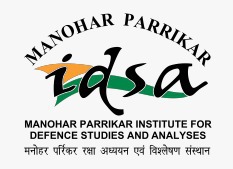
- This event has passed.
Report of the Monday Morning Meeting on, “The Shifting Dynamics of Major Powers in Southeast Asia”
March 10, 2025
Dr. Temjenmeren Ao, Associate Fellow, Manohar Parrikar Institute of Defence Studies and Analyses (MP-IDSA), spoke on, ‘The Shifting Dynamics of Major Powers in Southeast Asia” at the Monday Morning Meeting held on 10 March 2025. Ms. Shruti Pandalai, Associate Fellow, MP-IDSA moderated the meeting. The scholars of MP-IDSA participated in the discussion.
Executive Summary
Southeast Asia is strategically important due to its geographic location, economic potential, and role in global trade. The presentation focused on the shifting dynamics in Southeast Asia and how they reflect a complex interaction of geopolitical interests, economic aspirations, and security concerns. As China’s power continues to rise, other major powers like the U.S., Japan and Russia are recalibrating their strategies to safeguard their interests and maintain a balance of power. The region is increasingly becoming a focal point for global competition, with Southeast Asian countries playing an essential role in navigating these shifts.
Detailed Report
The session began with opening remarks by the moderator, Ms. Shruti Pandalai regarding the current geopolitical dynamics playing out in the global arena under Trump’s Presidency. She argued that the muscle memory of Trump 1.0 would trigger many Southeast Asian nations to assume that while they thought of Trump as inconvenient and transactional in the first term, they did think he was manageable. However, Trump’s current geopolitics with a reset of Russia relations, the Ukraine vote, the rupture of the Transatlantic alliance, Trade Wars and increasing strategic competition with China, signal that Washington no longer guarantees to underwrite the global order. Ms Pandalai argued that there is a view that the Trump administration team views relations with Southeast Asia largely as a subset of its approach to great-power competition with China. So on the one hand in the first few days of the administration, US prioritised maritime security, focusing on the South China Sea during discussions with Quad partners, doubled down regional defence alliances including a multilateral activity helmed by the U.S. Coast Guard with the Philippines, Indonesia, and Vietnam on maritime security. Yet on the other hand, Trump pressed Taiwan to increase defence spending, accused it of “stealing” the US semiconductor industry, and called the security alliance with Japan as non-reciprocal, are all moves that would make Southeast Asian nations anxious about the trajectory of global geopolitics and their ability to grapple with all these uncertainties and navigate great power competition
Following this, Dr. Temjenmeren Ao began his presentation and talk. He began by giving a brief overview of the importance of Southeast Asia as it remains geographically critical. He mentioned four major powers in Southeast Asia: the US, China, Japan and Russia. The two major powers with the most influence in Southeast Asia are the United States and China. He further explained that since the Cold War to post-Cold War, the U.S. with its military and economic power is a major external power in Southeast Asia.
Dr. Ao explained how the ongoing U.S.-China rivalry is being played out in the two potential geopolitical hotspots of the Indo-Pacific; the South China Sea and the Taiwan Straits. Thus, creating a volatile environment that is also pushing Southeast Asian countries towards diversifying their engagements beyond the U.S. and China. The U.S. has been attempting to regain its lost ground in Southeast Asia as a consequence of its escalating competition with China. The U.S. policy in Southeast Asia views multilateralism as fundamental towards complementing the alliances and partnerships it sought to build in the region. Under President Biden, the U.S. intensified its diplomatic outreach but reinforcing old alliances and establishing new partnerships including new minilaterals such as AUKUS and initiatives such as the Indo-Pacific Economic Framework (IPEF). Dr. Ao went on to explain that the U.S. has strong security interests and commitments in Southeast Asia and that how Trump’s Presidency would view Southeast Asia in his second term remains to be seen.
The speaker then spoke about China’s increasing influence in Southeast Asia. China’s geographical proximity and the presence of extensive Chinese ethnic minorities provide Beijing with an enormous and unique advantage in the region. Dr. Ao remarked that since the Asian Financial crisis of 1997, China with its timely economic outreach enabled it to become the largest trading partner of all the ten ASEAN countries. It has intensified its engagement in the region through programmes including infrastructure investments under China’s Belt and Road Initiative (BRI). Southeast Asian countries are faced with the challenge of managing these complex dynamics—balancing cooperation with China while also maintaining their relationships with other major powers like the U.S. and Japan.
Dr. Ao went on to explain how Japan has been strengthening its ties with Southeast Asia amidst the current geopolitical shifts and its own security complexities. The Fukuda Doctrine came out in 1977 and laid down the core for the building of Japan’s Southeast Asia policy, based on the principle of an equal partnership to promote peace and prosperity in the region. Japan became one of the most important economic and development partners in Southeast Asia. Dr. Ao also remarked that Japan’s National Security Strategy 2022, recognises Southeast Asia as a linchpin in its Indo-Pacific strategy, emphasising expanding defence cooperation with like-minded partners. He mentioned that in recent years, Japan has increased its engagement and security partnerships with Southeast Asian countries such as Vietnam, the Philippines and Indonesia amidst Sino-Russian naval activities around its southwestern islands, along with Moscow’s overtures with Pyongyang. Amidst uncertainty over U.S. commitments to the region, Japan seeks to broaden its security footprints in the region providing the ASEAN nations with an alternative, both in the economic and security spheres.
Dr. Ao explained how Russia has reinforced its great power status in Southeast Asia. The collapse of the Soviet Union, and the growing American and Western influence, perceived to threaten Russian national security made Moscow reassess its engagement with Southeast Asia. Russia began to deepen its defence cooperation while also establishing trade deals with ASEAN countries, mainly focused on energy exports and arms sales. He remarked that Russia projects itself as a great power focused on promoting a multi-polar world order through strengthening its bilateral relations along with intensifying its engagements in ASEAN-led mechanisms. Dr. Ao concluded his presentation by mentioning that Russia’s engagement in the region is still very limited in comparison to other major powers. While the U.S. and China are the primary major powers in Southeast Asia, countries like Japan and Russia are also expanding their geopolitical presence, providing strong alternatives to the region.
The session concluded after an insightful exchange of views between scholars during the Q&A session which widely ranged from how France too is a major player in Southeast Asia and ASEAN’s role in terms of ASEAN identity and ASEAN functioning.
Report has been prepared by Ms. Simran Walia, Research Analyst, MP-IDSA.



